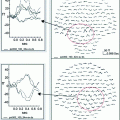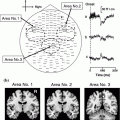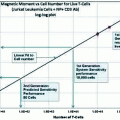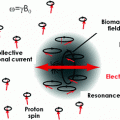© Springer-Verlag Berlin Heidelberg 2014
Selma Supek and Cheryl J. Aine (eds.)Magnetoencephalography10.1007/978-3-642-33045-2_44Presurgical MEG to Forecast Pediatric Cortical Epilepsies
(1)
Division of Neurology, MEG Center, Cincinnati Children’s Hospital Medical Center, University of Cincinnati, 3333 Burnet Avenue, Cincinnati, OH 45229, USA
Abstract
Although multiple modalities (semiology, EEG, MEG, PET, SPECT, fMRI) are useful for presurgical evaluation of patients with medication resistant epilepsy, only EEG and MEG have the millisecond time resolution to track the onset and spread of interictal discharges and ictal events. For good surgical outcome, both seizure onset zones (SOZ) and regions of immediate spread, the epileptogenic zone (EZ), need to be resected. Although for adults the main preoperative question may be whether seizures arise in left or right mesial temporal lobe, the locations of SOZ can be much more variable in children and adolescents. Recent studies indicate the most common cause of medically intractable epilepsy in pediatrics is cortical dysplasias functioning as epileptogenic regions. A child may have a single circumscribed cortical dysplastic region, multiple regions throughout a lobe, cerebral hemisphere, or even bihemispheric dysplastic regions. Sometimes seizures will start at just one focal cortical dysplastic region and spread throughout the brain. For other patients, multiple cortical dysplastic regions may independently generate seizures, more in the context of a seizure network than a single seizure focus. The difficult task is to anticipate the pattern of locations of cortical dysplasias and functional epileptogenic regions for each pediatric patient. Addressing this task adequately presurgically for each patient allows intracranial electrodes to be placed correctly to verify the locations where seizures start and to observe how the seizures spread in a single patient during different clinical seizure patterns. MEG with mathematical models of the head, brain and current source regions may be able to contribute significantly to the presurgical identification of the pediatric patient’s seizure networks and to the prediction of source locations that should be assessed with intracranial EEG recording.
Keywords
BeamformerCortical dysplasiaEpilepsyInterictalIctalMagnetoencephalographyPediatricSeizureSurgery1 Introduction
In children with medically intractable seizures who are candidates for epilepsy surgery, the most frequent etiology determined by postoperative pathology is abnormal cortical development, termed cortical dysplasia (Becker et al. 2006; Harvey et al. 2008). For evaluation of surgical candidates, no single recording or imaging modality has been able to predict correctly the location of seizure onset zones (SOZ) and epileptogenic zone (EZ) for all patients. Usually multiple modalities (seizure history, seizure semiology, video/EEG, high density EEG, MEG, MRI, EEG-fMRI, ictal SPECT, PET) are utilized to attempt to determine first the hemisphere of seizure onset, then the lobe of onset. If multiple modalities indicate the same hemisphere and lobe, there is some confidence that seizures may start in that lobe. However, each modality has its limitations.
Video/EEG with 10–20 electrode positions can capture seizures with excellent time resolution, but spatial resolution is limited. High density EEG with 128 or 256 scalp electrodes has improved spatial resolution over the scalp, though long recordings of several days are not yet routine. Methods to assess impedance tomography are not readily available to improve source localization with finite element modeling to account for tissue inhomogeneities that alter the measured electrical extracellular currents. MRI can provide superb anatomical resolution to identify certain types of cortical dysplasia, but diffuse cortical dysplasias sometimes escape detection. The anatomical assessment does not indicate which cortical dysplasias may be pathologically relevant for seizure onset or spread. EEG-fMRI combines certainty of localization with timing of interictal discharges, but the blood oxygen level dependent (BOLD) response may occur with a delay of up to 5 s. The relative timing in the rapid evolution and spread of electrical activity during the interictal discharge from one cortical region to another may be blurred and lost by 5 s later. The recording of ictal events may be limited because of associated patient movement at seizure onset. Ictal SPECT has been very successful in highlighting increased blood flow at seizure onset. However, because of timing of injection, the highest signal region may not have been the region of first onset. Multiple regions sometimes are activated, but relative timing can be difficult to ascertain. Finally, if the patient has multiple seizure types, the ictal SPECT may have only captured one of the types unless the test is repeated multiple times. PET scan does not have to capture a seizure and can show hypometabolism in the hemisphere involved in seizures, but spatial resolution may be limited to a lobe or hemisphere. MEG has both excellent time resolution and good spatial resolution, but the generally short recording times of 1–2 h means that primarily interictal discharges, not seizures, are captured. However, if a seizure is captured, MEG may be useful to examine signals at the very beginning of the clinical seizure, before the patient begins to move. Continuous head localization with real time tracking of fiducial sources may be able to track head movement even after the patient begins to move, although presence of scalp muscle artifact can decrease signal to noise ratio (SNR), similar to EEG. If seizures are not captured, the question becomes how much information can be extracted from captured interictal discharges and how closely the evolution of an interictal discharge recapitulates the spread of a seizure (Lopes da Silva 2008).
2 Application of MEG Analysis to Interictal Discharges for Presurgical Estimation of Seizure Localization: Observations on General Limitations
Unlike adults, pediatric patients often have many interictal discharges captured during a 1–2 h MEG recording session. Nonetheless, the first limitation occurs when the pediatric patient does not have any interictal discharges from the hemisphere from which seizures are recorded by other modalities, such as video/EEG. The second limitation occurs when the patient has frequent interictal discharges from both hemispheres. MEG can provide localizations for the interictal discharges in each hemisphere, but cannot provide fundamental information regarding whether seizures begin in one hemisphere, or independently in each hemisphere. Unless actual seizures have also been captured for that patient by MEG, MEG data must be interpreted in the context of seizures captured by other modalities, such as video/EEG. Finally, both MEG and EEG must deal with the uncertainty of the inverse problem. They must rely on other information such as knowledge of brain anatomy to limit ictal onsets to regions of neurons rather than ventricles or blood vessels, and to cortical surfaces rather than regions of primarily white matter. Thus, interpretation of both modalities are dependent on MRI and known physiologic characteristics regarding most likely locations for epileptiform discharges to arise, either ictal or interictal. If these overall clinical limitations are kept in mind for each patient, it may be possible to attend to interictal discharges in the correct hemisphere to address issues of origin and spread.
3 Characterization of Interictal Discharges to Forecast Ictal Discharges in Pediatric Patients
An on-going debate occurs whether interictal spikes and sharp waves, brief events lasting perhaps 30–200 ms, arise anywhere near or within the SOZ and EZ or only represent irritative zones far removed from the seizure onset zone. Some authors note that interictal discharges, although brief, can spread rapidly through the brain (Alarcon et al. 1994; Ossadtchi et al. 2005; Hara et al. 2007) and suggest that elucidation of these propagation patterns may be similar to the pathways utilized during ictal initiation spread. Other authors note a variability of the propagation patterns during an interictal spike (Lantz et al. 2003; Sabolek et al. 2012), although patients whose seizures seem to begin similarly but evolve in different patterns are well known. One group studying six patients with mixed patterns of cortical dysplasia with EEG-fMRI, noted that for some types of cortical dysplasia, interictal and ictal activation involved the same MRI lesions, while for patients with other types of cortical dysplasia, interictal discharges showed BOLD changes in the MRI lesion, but ictal discharges showed more activity in the overlying cortex (Tyvaert et al. 2008). Because interictal discharges can arise in the hemisphere opposite to that suggested by the patient’s seizure semiology, care must be taken in choosing the interictal discharges to be examined in detail. In addition, as with all evaluative modalities in the patient’s presurgical examination, the interpretation of the findings must be considered in light of the results from all the other evaluative modalities. Since the seizure is the event to be treated, every effort should be made to maximize the opportunity to capture one or more ictal events during the MEG study, and particularly the first few seconds before the patient begins to move. The same kinds of analysis for onset and propagation may be applied to the early ictal onset as are applied to interictal discharges.
Ictal onsets recorded with intracranial electrodes often begin with low amplitude high frequency repetitive activity that spreads locally and then more generally as the seizure evolves. The ability to detect these higher frequencies with MEG by examining higher bandwidths may improve analysis of cortical activities from extracranial recordings (Xiang et al. 2009, 2010; Rampp et al. 2010). Simply choosing a bandwidth of 20–70 Hz, instead of 1–70 Hz may eliminate much of the interfering lower frequency activities and improve SNR. The goal then may be to identify established abnormal networks of signal spread that occur in interictal discharges, some of which may occur also as networks of favored signal spread during ictal discharges.
From clinical experience, at least three patterns of cortical dysplasia may be seen in pediatric patients with medically intractable epilepsy: (1) a single focal region of cortical dysplasia from which seizures arise, (2) multiple regions of cortical dysplasia that may seem separate and sometimes distant, albeit in the same lobe, or different lobes in the same hemisphere, or (3) a diffuse region of cortical dysplasia throughout one or more lobes in a hemisphere (the pathologic, rather than functional, classification of cortical dysplasias has become more complex (Blumcke et al. 2011; Kabat and Krol 2012)). The challenge, once MEG signals are acquired at a high digitization rate, is which mathematical analysis algorithms to apply to these signals to best characterize the features of the underlying pathologic cortical activity.
Stay updated, free articles. Join our Telegram channel

Full access? Get Clinical Tree







